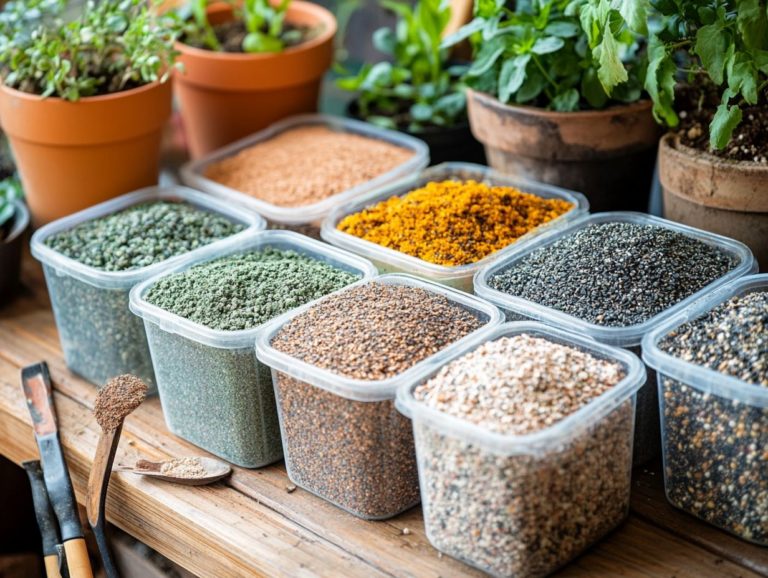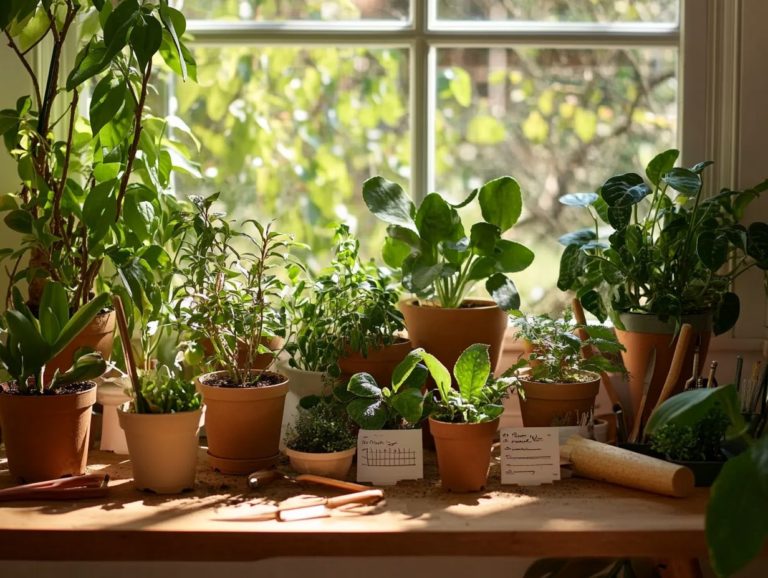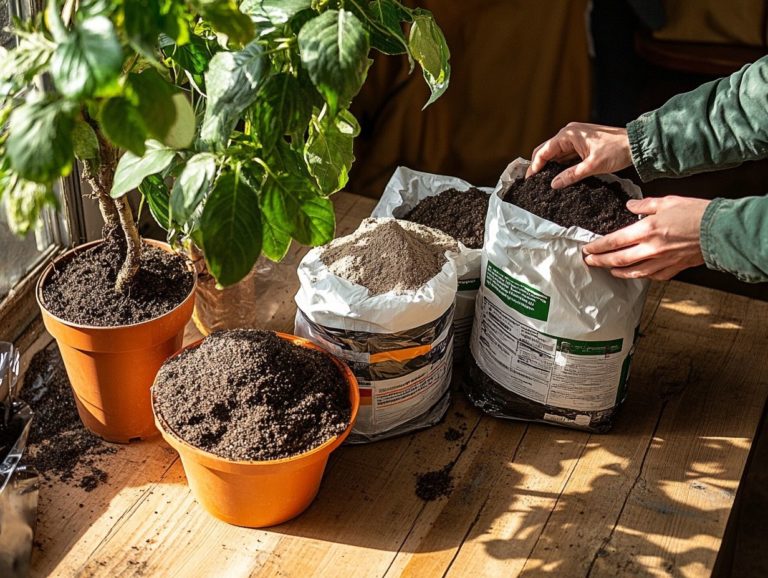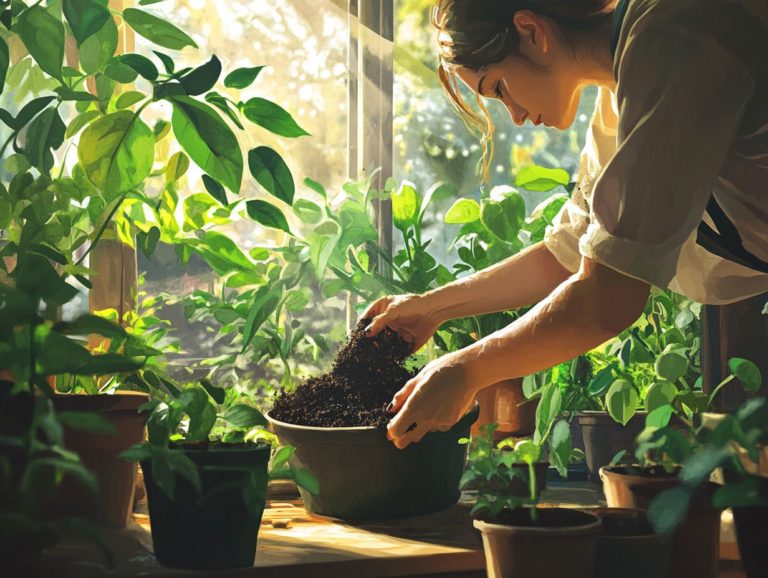The Role of Nutrients in Indoor Plant Soil
Indoor plants bring life and beauty to any space. Their vibrancy depends on the quality of their soil.
Knowing the essential nutrients that nourish your plants is vital for their healthy growth. This article explores how nutrients influence plant development and highlights key nutrients to watch for.
You ll learn how to select the right soil and fertilization practices. We ll compare organic and synthetic options for achieving optimal plant health.
Let s dive in and unlock the secrets to cultivating thriving indoor plants!
Contents
- Key Takeaways:
- The Importance of Nutrients in Indoor Plant Soil
- Essential Nutrients for Indoor Plants
- Macronutrients and Micronutrients
- Signs of Nutrient Deficiency
- Identifying and Addressing Deficiencies
- Choosing the Right Soil for Your Indoor Plants
- Understanding Soil Composition and Nutrient Levels
- Fertilizing Indoor Plants
- Organic vs. Synthetic Fertilizers
- Frequently Asked Questions
- What are the essential nutrients for indoor plant soil?
- Why are these nutrients important for indoor plant soil?
- How can I ensure my indoor plants have enough nutrients in their soil?
- What happens if my indoor plant soil lacks nutrients?
- Can I over-fertilize my indoor plants?
- How often should I fertilize my indoor plants?
Key Takeaways:
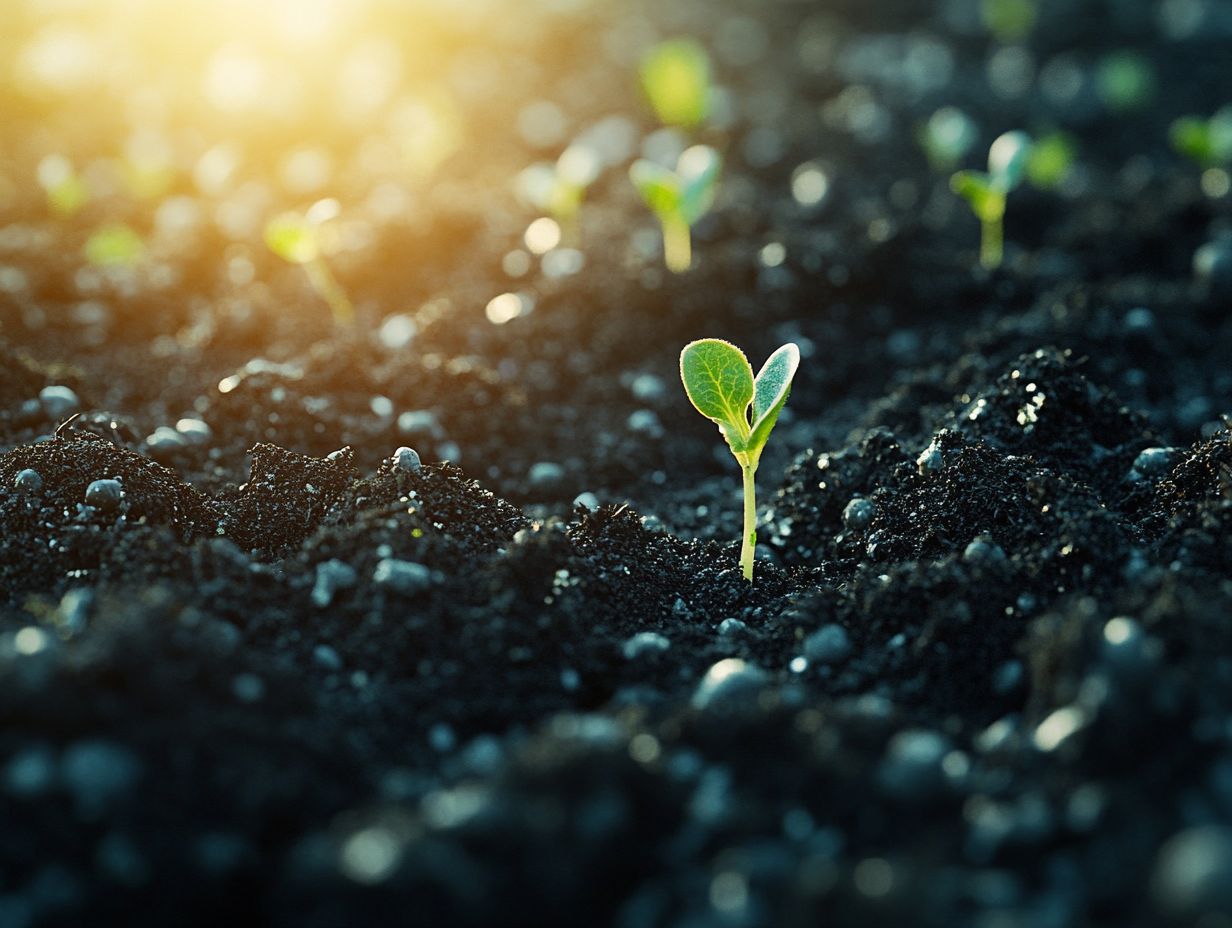
- Proper nutrients are essential for healthy indoor plants and directly impact growth.
- Indoor plants need a mix of macronutrients and micronutrients for optimal health.
- Identifying nutrient deficiencies is crucial for plant health; understanding soil composition and using fertilizers correctly can help.
The Importance of Nutrients in Indoor Plant Soil
Understanding nutrients in indoor plant soil is key to vibrant, healthy growth. Nutrients like nitrogen, phosphorus, and potassium are critical for your plants’ health.
These elements support processes like photosynthesis and nutrient uptake. Getting the right balance enhances soil quality and improves your plant care routine.
How Nutrients Affect Plant Growth
Nutrients are vital for plant growth, impacting healthy leaves and strong roots. Important macronutrients like nitrogen, phosphorus, and potassium support various growth functions.
Nitrogen helps with leaf development, creating lush green foliage. Phosphorus cultivates robust root systems, enhancing water and nutrient absorption.
Potassium boosts overall plant health by enhancing stress resistance and supporting enzyme functions. Tailoring nutrient mixes to your plants can yield impressive results.
By managing nutrients well, you can speed up growth rates and improve the quality of your plants.
Essential Nutrients for Indoor Plants
Indoor plants thrive with a balanced range of essential nutrients. These nutrients are divided into two main categories: macronutrients and micronutrients.
Macronutrients like nitrogen, phosphorus, and potassium are needed in larger amounts. Micronutrients, such as iron and magnesium, are required in smaller amounts but are equally important for plant health.
Understanding this balance is key to nurturing healthy and thriving plants.
Macronutrients and Micronutrients
Macronutrients are the essential nutrients that your indoor plants crave in abundant quantities. Think of nitrogen, phosphorus, and potassium these elements are crucial for growth, flowering, and fruiting.
On the flip side, you ve got micronutrients, like iron and copper, which are nutrients needed in small amounts but play significant roles in various biochemical functions that contribute to your plants’ overall vitality.
Understanding the functions of these nutrients is vital for any serious plant enthusiast. Nitrogen is your go-to for promoting lush leaf growth. Phosphorus supports robust root development and flowering, while potassium enhances your plants’ overall health and disease resistance. Meanwhile, micronutrients like manganese and zinc are pivotal for chlorophyll production and enzyme function, even though they are required in smaller quantities. Additionally, understanding why soil quality matters for indoor plants can further enhance your gardening success.
Common sources of these nutrients can be found in a variety of fertilizers, each crafted to keep a balanced nutrient profile in your soil. Achieving that balance is key; too much or too little of specific nutrients can stunt growth or create deficiencies. Regular soil tests and tailored nutrient applications, along with using the top soil amendments for healthy indoor plants, are essential for ensuring your plants thrive.
Signs of Nutrient Deficiency

Recognizing the signs of nutrient deficiency in your houseplants is essential for maintaining their health and vitality. Pay attention to symptoms like yellowing leaves, stunted growth, or lackluster flowering. They often indicate that your plants may be lacking essential nutrients particularly nitrogen, phosphorus, or potassium.
Addressing these deficiencies with timely fertilizer application can be crucial in restoring your plants to their thriving selves.
Identifying and Addressing Deficiencies
Identifying and addressing nutrient deficiencies in your houseplants requires a keen eye and a solid understanding of their needs. Monitor symptoms and test your soil to find lacking nutrients, and adjust your fertilizing practices to enhance nutrient uptake and promote overall plant health.
It’s crucial to recognize visual cues like yellowing leaves, stunted growth, or curled foliage these can signal specific nutrient deficiencies. Soil testing offers a precise analysis of nutrient levels and pH balance.
In terms of solutions, balanced fertilizers that provide a mix of essential nutrients are typically effective. You might also consider targeted amendments like bone meal for phosphorus or Epsom salt for magnesium to address specific shortages.
Alongside these interventions, adopting best practices can significantly boost your plants’ vitality and help prevent future deficiencies. Consistent watering and ensuring adequate light are key elements.
Choosing the Right Soil for Your Indoor Plants
Selecting the perfect soil for your indoor plants is crucial for cultivating an environment that nurtures healthy growth and enhances nutrient absorption. The soil composition should be tailored to the unique requirements of each plant species, ensuring it delivers the ideal balance of macronutrients, micronutrients, and organic matter.
This thoughtful approach promotes strong root systems and vibrant foliage, transforming your indoor space into a lush oasis.
Understanding Soil Composition and Nutrient Levels
Understanding soil composition is vital for your indoor plant care, as it directly influences nutrient levels and the availability of essential nutrients. A well-balanced potting soil should contain organic matter, minerals, and a thriving microbial community to foster an ideal environment for growth.
Different components like sand, silt, and clay play significant roles in shaping the texture and structure of your soil. Sand provides exceptional drainage, preventing the dreaded waterlogging, while clay retains moisture and nutrients. Silt strikes a balance, enhancing the soil’s ability to retain moisture without becoming overly compacted.
By grasping these components and their interactions, you can choose a potting mix tailored to your indoor plants’ needs. This ensures they achieve optimal health and growth in your home environment.
Take action now to ensure your plants thrive!
Fertilizing Indoor Plants
Fertilizing your indoor plants is essential for their care. It guarantees they receive the vital nutrients needed for robust growth and lush foliage.
By implementing a thoughtfully crafted feeding schedule that caters to the specific requirements of each plant species, you can enhance nutrient absorption and cultivate a thriving indoor garden. Understanding the role of soil in indoor plant ecosystems is also essential for optimal growth.
Best Practices and Timing for Fertilization
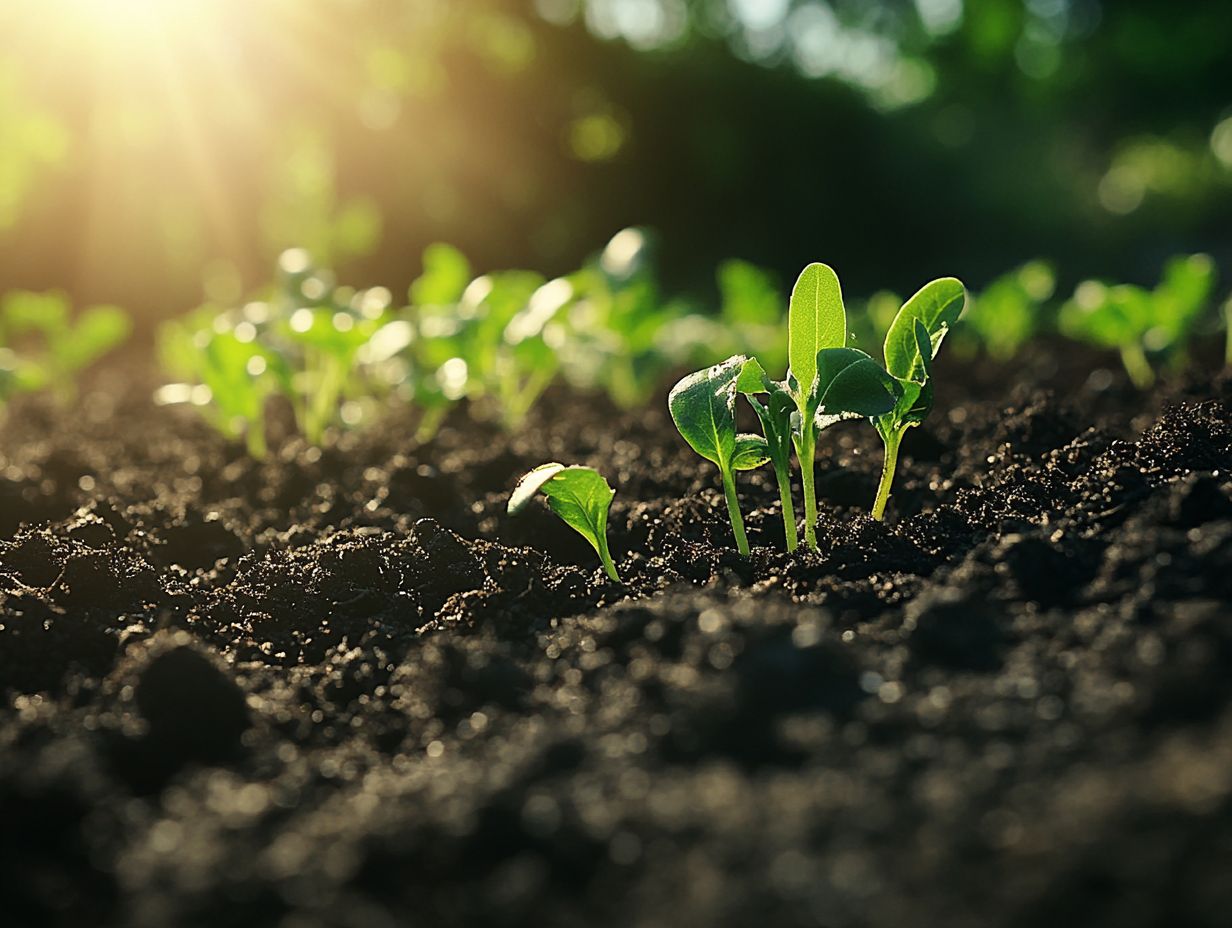
Implementing best practices and optimal timing for fertilization can elevate the health and vitality of your indoor plants. Knowing when to apply fertilizer and selecting the right N-P-K ratio the ratio of nitrogen, phosphorus, and potassium ensures nutrients are effectively utilized during their growth season.
Decoding the fertilizer label is essential; it reveals the main nutrients available for your plants. This ratio indicates the primary nutrients that promote lush foliage, strong root systems, and vibrant blooms.
Seasonal fertilization strategies are key. Your plants typically enter a phase of active growth in spring and summer, requiring more frequent feeding. In contrast, during fall and winter dormancy, you’ll need to adjust both the frequency and quantity of fertilization.
Understanding these nuances and respecting individual plant preferences can enhance nutrient absorption and ultimately cultivate thriving indoor greenery.
Organic vs. Synthetic Fertilizers
Choosing between organic and synthetic fertilizers can be an exciting journey for any plant lover. Each presents distinct advantages and challenges for your indoor plant care journey.
Organic fertilizers, sourced from natural materials, promote soil health and boost microbial activity, fostering a thriving ecosystem. Conversely, synthetic fertilizers offer immediate nutrient availability, enabling swift and robust plant growth.
Ultimately, the choice lies in your gardening philosophy and the specific needs of your green companions.
Pros and Cons of Each Option
- Organic Fertilizers: Enhance soil structure and promote long-term sustainability.
- Synthetic Fertilizers: Provide quick nutrient boosts for fast-growing plants.
Your choice between these options often depends on factors like environmental impact, cost, and the specific nutrient needs of your indoor plants. For example, organic options are generally more eco-friendly, reducing the risk of chemical runoff and supporting biodiversity. However, they often come with a heftier price tag and may require more frequent applications.
Conversely, synthetic fertilizers can deliver nutrients quickly and effectively address specific nutrient deficiencies, making them an appealing choice when immediate results are essential, especially in demanding plant environments.
Ultimately, selecting the right fertilizer means understanding the unique needs of your indoor plants, including their growth stage and environmental conditions. This ensures you strike the right balance between health and sustainability.
Frequently Asked Questions
What are the essential nutrients for indoor plant soil?
The essential nutrients for indoor plant soil include nitrogen, phosphorus, potassium, calcium, magnesium, and sulfur.
Why are these nutrients important for indoor plant soil?
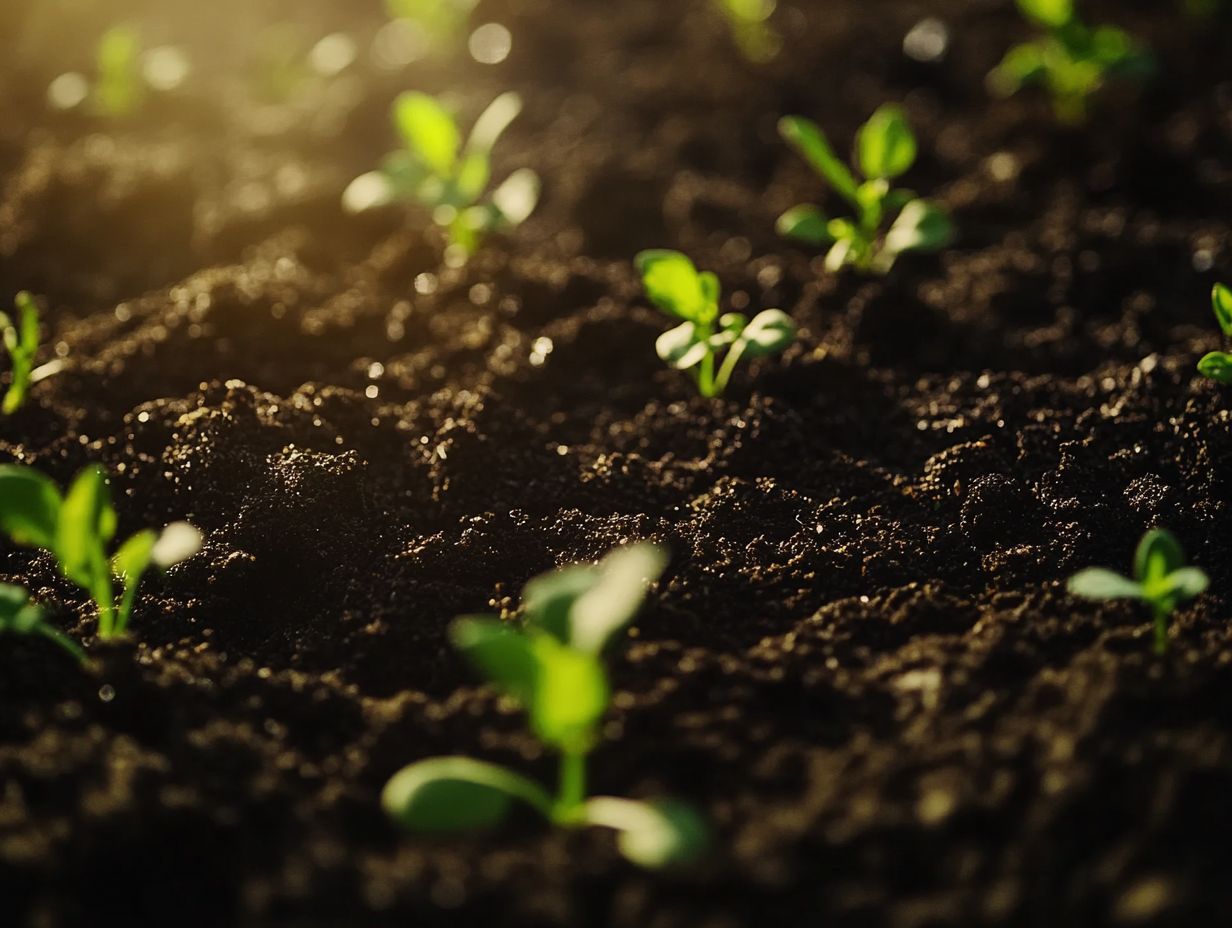
These nutrients play a vital role in the growth and development of indoor plants. They provide the necessary elements for photosynthesis, root development, and overall plant health.
How can I ensure my indoor plants have enough nutrients in their soil?
You can use a balanced fertilizer or add organic matter, such as compost or worm castings, to the soil. This provides a steady supply of nutrients for your indoor plants.
What happens if my indoor plant soil lacks nutrients?
If your indoor plant soil lacks nutrients, your plants may show stunted growth or yellowing leaves.
They will also be more susceptible to pests and diseases.
Can I over-fertilize my indoor plants?
Over-fertilizing can harm your indoor plants.
It may cause nutrient burn, damaging the roots and leaves, leading to stunted growth or even death.
How often should I fertilize my indoor plants?
The frequency of fertilizing depends on the plant type and fertilizer used.
Typically, fertilize once a month, but always check the label for the best results!

